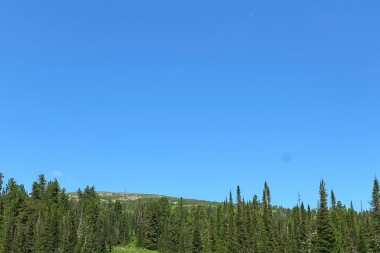SibFU Scientists Explain Adaptation of Siberian Pine to Climate Change
Scientists from the School of Ecology and Geography of Siberian Federal University conducted a study to define indicators that allow identifying individual characteristics of Siberian pine trees — due to these features, trees manage to remain viable in the most adverse conditions, maintain frost resistance with a temporary increase in temperature in winter and resistance to emerging water scarcity.
In the context of global climate change, the problem of adaptation of plants to adverse environmental factors is gaining relevance. Many species of coniferous trees are beginning to change the established boundaries of their range. The southern border of coniferous forests is shifting due to a decrease in humidity, and the northern (upper) border is changing its contour due to a noticeable increase in temperature in recent years. Scientists believe that these processes reduce the ability of forests to effectively absorb carbon, and this can provoke an increase in the greenhouse effect.
“Our group is studying a variety of effects that changing environmental conditions have on coniferous plants. There is evidence that an increase in temperature, for example, in the mountains of Kuznetsk Alatau (Kemerovo region) has a stimulating effect on trees, on their radial growth. However, at the same time, there are significant risks associated with warming. For example, the process of conifers emerging from winter dormancy during short-term thaws. A temporary increase in temperature in conditions of high insolation (a large amount of sunlight) can cause the resumption of photosynthetic activity, which is accompanied by the resumption of gas exchange and evaporation of water. But the soils are still cold, unheated! This situation leads to a shortage of water, drying of needles, and even the death of trees,”noted Nina Pakharkova.
It is known that cedar “helps” the spread of Siberian pine by spreading seeds and burying them in moss and underlays. Many of these seeds subsequently germinate, but only a small percentage of seedlings become mature trees. At the same time, the proportion of such “lucky ones” under the canopy of the forest is much higher than in the open area. Therefore, it is important to understand what features of these specimens allow them to survive in the harsh conditions of the mountains.
“Our group is studying a variety of effects that changing environmental conditions have on coniferous plants. There is evidence that an increase in temperature, for example, in the mountains of Kuznetsk Alatau (Kemerovo region) has a stimulating effect on trees, on their radial growth. However, at the same time, there are significant risks associated with warming. For example, the process of conifers emerging from winter dormancy during short-term thaws. A temporary increase in temperature in conditions of high insolation (a large amount of sunlight) can cause the resumption of photosynthetic activity, which is accompanied by the resumption of gas exchange and evaporation of water. But the soils are still cold, unheated! This situation leads to a shortage of water, drying of needles, and even the death of trees,”noted Nina Pakharkova.
To find out the adaptive potential of a particular coniferous species to climate change, scientists considered the functional characteristics of the needles of the Siberian pine (Pinus sibirica du Tour), growing in the area of the Ergaki Natural Park on the Western Sayan.
In the spring months and in the middle of summer, the members of the scientific team collected shoots of Siberian pine at different heights above sea level for subsequent determination of the depth of winter rest, the pigment composition of needles and other physiological and biochemical parameters. The first results have already been obtained.
Among the model trees from four sample areas located at different heights above sea level (and the two upper sections are above the forest boundary), scientists selected specimens with minimum and maximum chlorophyll fluorescence indices. It was confirmed that these indicators are closely related to the characteristics of the pigment composition and the weight of the needles. According to many researchers, chlorophyll fluorescence is a promising method for elucidating the phenotype of plants. Thus, it will be possible to identify the most stress-resistant and productive pine specimens that can survive in the most extreme conditions above the current upper forest boundary and become the basis for the formation of forest ecosystems in these regions.
It is likely that the data obtained by the scientific team of the School of Ecology and Geography of Siberian Federal University on the upper border of the forest in conditions of high-altitude zonation will be correct in the latitudinal direction for the northern border of the range.
The study is supported by the RNF project “Intrapopulation variability of ecophysiological characteristics of Siberian pine trees (Pinus sibirica Du Tour) under climate change conditions”.





